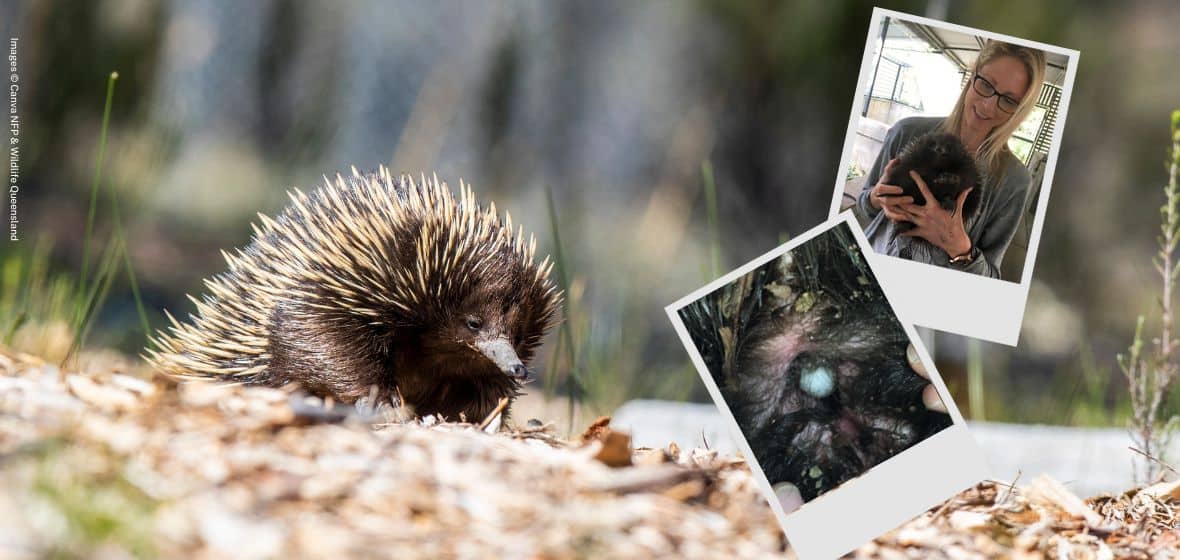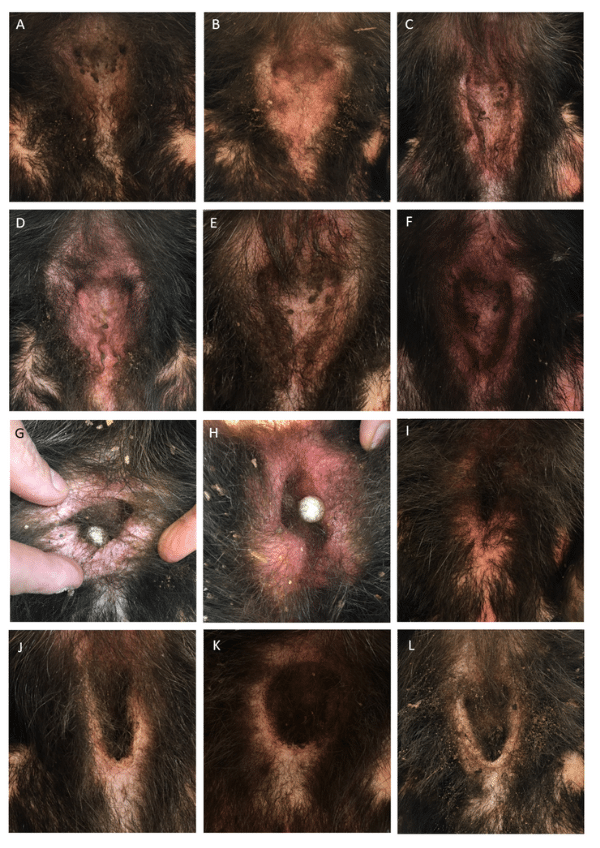
27 June 2023
Nature never ceases to amaze us with its extraordinary adaptations. While marsupials are well-known for having a pouch to carry their young, did you know that short-beaked echidnas (an egg-laying mammal) also possess a pouch?
Only pregnant echidnas develop a pouch
Historical records dating back to the late 19th century observed the seasonal development of the echidna’s pouch, regardless of whether the female was pregnant. However, more recent studies have revealed that only pregnant female echidnas develop a pouch, and its development initiates around two days after mating.
Echidna expert, Dr Kate Dutton-Regester, recently researched this topic, providing valuable insights into the morphological changes associated with pouch development.
Echidna pouch development grading system
Kate’s study focused on nine female echidnas. During the research, the pouches of these echidnas were closely monitored and photographed at various stages of gestation.
Kate collected over 283 photographs, analysing changes in pouch appearance. Through this process, she developed a 4-stage grading system based on qualitative factors such as colour and thickening of the pouch margins.
- Stage 1: At the onset of the breeding season, the pouch is pale pink in colour, and the pouch is generally flat. However, the margins of the pouch may be slightly raised in some females. During the first half of the 16–18-day gestation, the pouch margins become thicker, leading to a deeper pouch.
- Stage 2: During the second half of pregnancy, the pouch margins have pronounced swelling resulting in increased pouch depth. Additionally, the skin flushes deep pink in colour 3 to 5 days before egg laying.
- Stage 3: By the time of egg laying, the pouch margins draw together tight, like a drawstring bag, closing the pouch to enclose the newly deposited egg. The pouch skin remains deep pink in colour.
- Stage 4: Following the emergence of the pouch young, the pouch remains closed for a brief period before regression. During this regression phase, which can take 12-30 days, the skin appears looser, but the pouch margins persist. The pouch soon returns to its initial flat or slightly raised state.

Images: Short-beaked echidna pouch development. A-C, Stage 1; D-F, Stage 2; G-I, Stage 3; J-L, Stage 4.
Interestingly, the precise mechanisms governing pouch development in pregnant echidnas are not fully understood.
“We speculate that mechanical influences, such as the presence of the egg or young within the pouch, play a role in pouch development,” said Kate.
Pouches secrete a clear fluid
During the study, Kate observed the secretion of clear fluid from the pouch of one female echidna. This fluid secretion occurred both before the female mated and throughout her 17-day gestation period.
The purpose of this fluid secretion has yet to be fully understood. Still, it is hypothesised that it may serve to attract a mate by containing chemosensory properties, facilitating communication between potential partners.
Additionally, fluid secretion could play a role in pouch cleaning during the periparturient period, ensuring a hygienic environment for the developing young. Another possibility is that the fluid contains antibacterial properties, conferring immunity to the young and protecting them from potential infections. Further research is needed to unravel the precise function of this intriguing pouch fluid secretion.
These recent discoveries offer valuable insights into the reproductive biology of the intriguing echidna. The transient nature of the pouch during the breeding season distinguishes them from other pouch-bearing mammals, providing a captivating glimpse into nature’s intricate designs.
More Information
- For information about Wildlife Queensland’s conservation work with echidnas and to learn more about this fascinating monotreme, please visit our EchidnaWatch program page.
- If you spot an echidna in the wild, please report your sighting online via our EchidnaWatch Sighting Form.
